Sapphire Gemstone: Colors, Meanings, Prices & Benefits
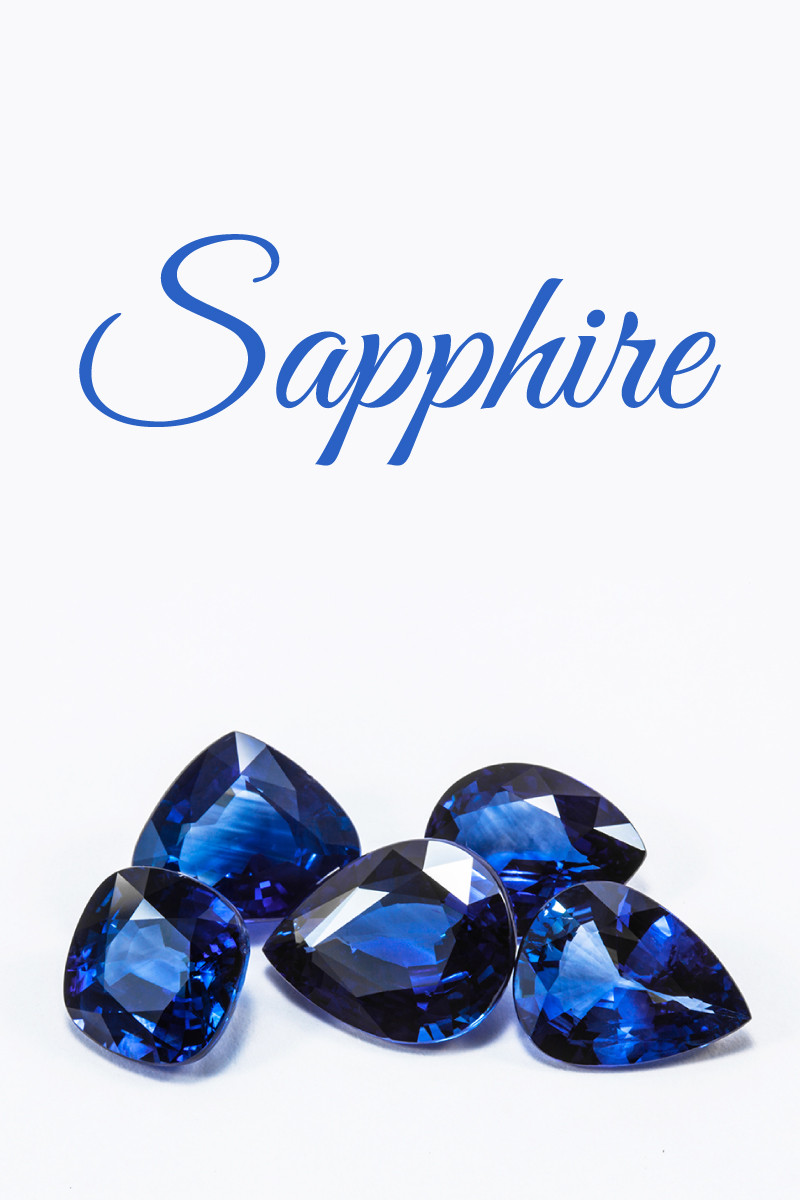 Sapphire is a corundum gemstone beloved for many reasons throughout history. Besides its beautiful colors, people have revered sapphires for their alleged spiritual powers and durability in industrial applications.
Sapphire is a corundum gemstone beloved for many reasons throughout history. Besides its beautiful colors, people have revered sapphires for their alleged spiritual powers and durability in industrial applications.
It’s difficult to separate sapphire from blue, despite the stone coming in a rainbow of other colors. In fact, the word “sapphire” described lapis lazuli and other blue gems until the Middle Ages. Today, “sapphire blue” is its own color outside the gem, seen in various arts.
What is the rarest color of sapphire? It’s not cut-and-dry, but most gemologists would say Kashmir blue or Padparadscha sapphires are rarest.
Don’t recognize those terms? Don’t worry! This guide will break down every sapphire gemstone color and variety, along with this legendary gem’s history, prices, and meanings.
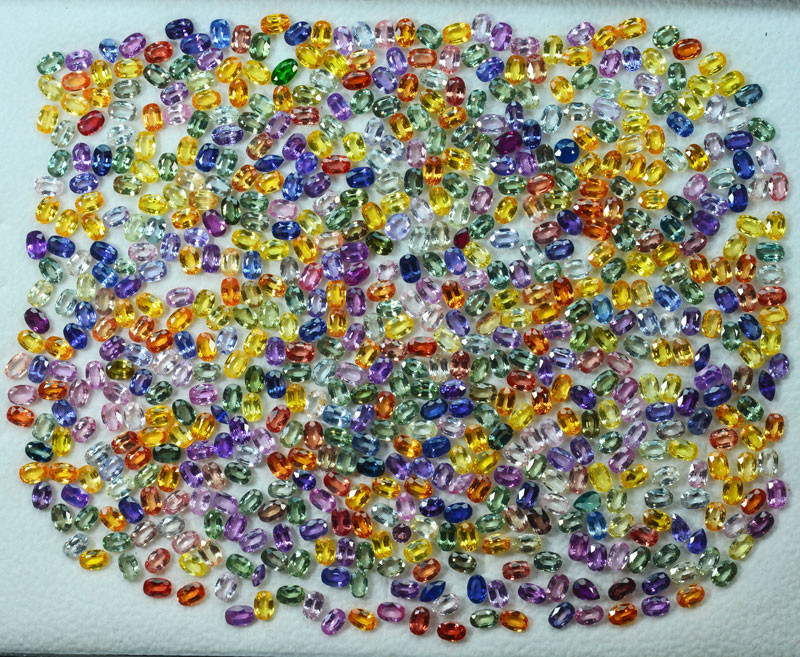
About Sapphire Stone
Regardless of its color, sapphire is one of the four precious gemstones. The sapphire birthstone honors those born in September, though it was historically a birthstone for April. The stone is also a 5th, 45th, and 65th wedding anniversary gem. Astrologically, sapphires are Taurus zodiac stones.
Certain sapphire colors are important in Ayurvedic (or Hindu) astrology. In this practice, blue sapphire, called Neelam, is a Saturn star stone while yellow sapphire, or Pukhraj, is a Jupiter stone.
Sapphire is the official state gemstone of Montana, USA, and Queensland, Australia.
Outside of jewelry, sapphire has some important industrial applications, including:
Watches
Electronic wafers
Semiconductor components
LED substrates
Extra durable windows (including ones used for infrared optics)
If you have a stainless steel or titanium model of the Apple Watch, it might contain sapphire glass!
One reason sapphires are industrially useful is their high ranking on the Mohs mineral hardness scale, one of the properties we’ll discuss next.
Sapphire Specifications & Characteristics
Sapphires are one of the two varieties of corundum, the other being ruby. Corundum minerals are composed of aluminum oxide.
Typically, sapphires form as flat-ended prismatic, barrel-shaped, or bipyramidal crystals.
Below, we’ve listed sapphire’s mineral properties.
(For specific sapphire color properties like pleochroism or luminescence colors, check out each sapphire color guide linked in the next section.)
Mineral family: Corundum
Color: All colors but red; Possible color-zoning
Crystal structure: Hexagonal (trigonal)
Luster: Vitreous (glassy) to sub-adamantine
Transparency: Transparent to opaque
Refractive index: 1.757-1.779
Density: 3.99-4.10
Cleavage: None
Fracture: Conchoidal
Streak: White
Luminescence: Fluorescence present in all but black, green, and most blue sapphires (natural), varying degrees in all colors (synthetic); X-ray colors in some specimens from Sri Lanka, Kashmir, and Montana - dull red or yellow-orange
Pleochroism: Present & very strong in most sapphire colors
Birefringence: 0.008-0.009
Dispersion: 0.018
Optical effects: Asterism, chatoyancy, color-changing
Now, what are the colors of sapphire?
Sapphire Colors List
All non-red corundum is considered sapphire, meaning sapphires come in virtually every other color. Different hues are rarer, more popular, or more valuable. Each color comes from different impurities.
Let’s start with the most common sapphire color: blue.
Blue Sapphires
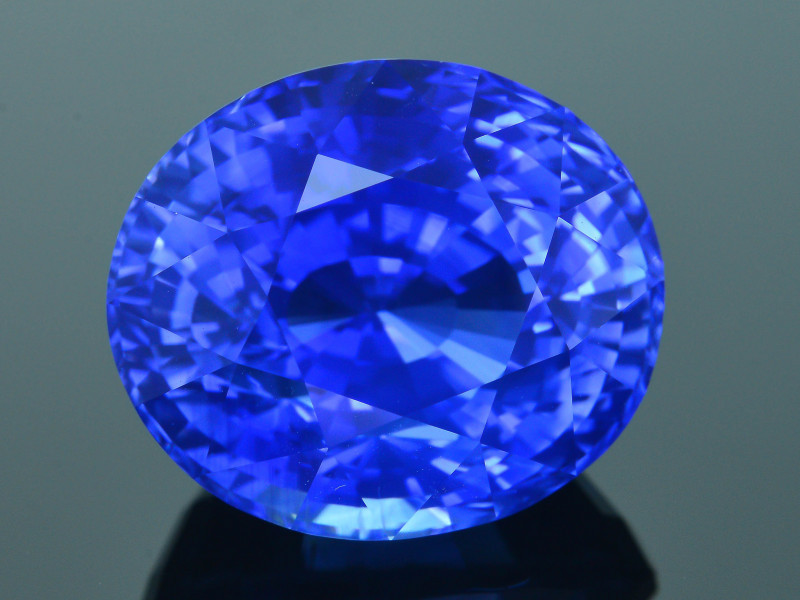
There’s no doubt that blue is sapphire’s most popular color, tied to the stone throughout history. This color comes from iron and titanium impurities, with more titanium causing darker shades.
Any secondary undertones (like violet or green) can only make up 15 percent or less of the overall color for the stone to classify as a blue sapphire.
Blue sapphires are in high-demand, making their prices steeper than other colors, despite not being that rare.
That said, certain shades are rarer and more valuable than others.
The main types of blue sapphires are:
Kashmir: Widely regarded as the best sapphire color, deep cornflower blue with a velvety appearance due to silk inclusions, sourced from the Himalayas but extremely rare.
Cornflower Blue: Pure blue (cornflower) shade, distinguished from Kashmir by coming from other sources.
Royal Blue: Deep, vivid blue with purple to violet undertones.
Ice Blue: Pale, glacier-like blue often with green undertones.
Yogo: High-quality, cornflower blue sapphires from Yogo Gulch in Montana, USA.
Ceylon (Sri Lankan): Pale to rich blue sapphires with great saturation, sparkle, and brightness, sourced from Sri Lanka.
Of course, this doesn’t cover every shade. You’ll see lots of descriptors like baby blue, indigo, navy, twilight, and more.
All the remaining non-blue sapphires are called “fancy” or “fancy color” sapphires.
Pink Sapphire
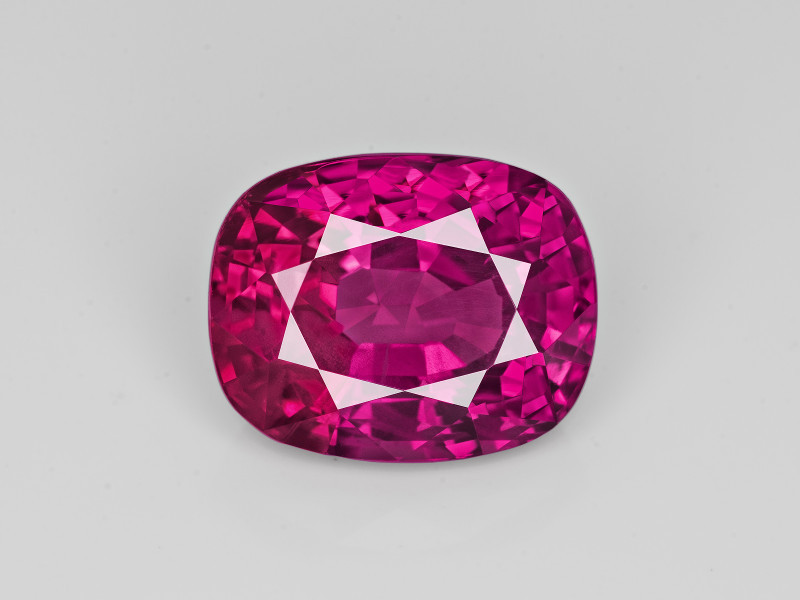
Pink sapphires have light red hues due to small amounts of chromium impurities. Common undertones are purple, orange, or yellow. Popular shades are baby pink and magenta.
Gemologists don’t agree on the exact difference between rubies and pink sapphires. Some classify pink-colored corundum as rubies, while others only classify dominantly red corundum stones as rubies.
Since rubies are rarer, many sellers may opt to label pink corundum as “ruby” to mark up the price, so keep that in mind while shopping.
Purple Sapphire
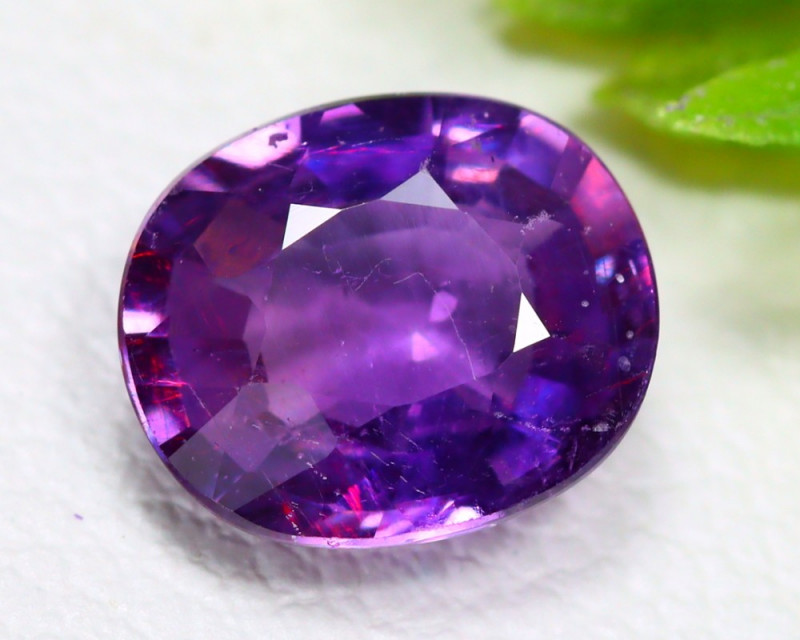
Purple sapphires are fairly rare. Their purple hue can come from vanadium or a combination of chromium, titanium, and ferrous iron. Common undertones are red, pink, blue, and gray.
Value-wise, purple sapphires fall below blue but above yellow and green.
One famous (or infamous) example is the Delhi Purple Sapphire, which is actually an amethyst.
Yellow Sapphire

Available in light to dark tones, the most valuable yellow sapphires are vibrant canary yellow being most valuable. The yellow hue comes from ferric iron (Fe3+) impurities. Common undertones are green, orange, brown, and pink.
Yellow sapphires in Hindu astrology are called Pukhraj and work with Jupiter.
Orange Sapphire
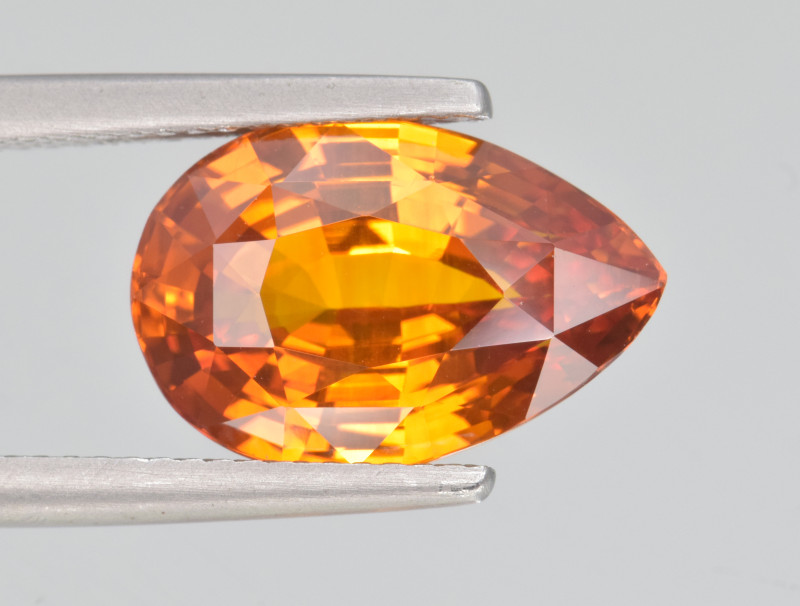
Orange sapphires are best in bright, red-orange or pure orange hues. The color can come from a combination of chromium and iron impurities or exposure to irradiation (natural or lab-induced). Common undertones are yellow, red, brown, or pink.
Some orange sapphires have been treated with beryllium diffusion, which turns light green to yellow sapphires into vibrant orange ones.
Green Sapphire

Ranging from pastels to deep forest greens, green sapphires are versatile and abundant. The color comes from a mixture of ferric iron (Fe3+) and ferrous iron (Fe2+) impurities. Common undertones are yellow, gray
Being abundant and under-the-radar makes green sapphires more budget-friendly, even as emerald substitutes.
White Sapphire

White sapphire can be white or colorless depending on its transparency and clarity. This is the purest form of corundum, with little to no impurities present. Natural ones are quite rare, so most on the market are synthetic or treated.
This sapphire is a common non-diamond engagement ring alternative.
Black Sapphire
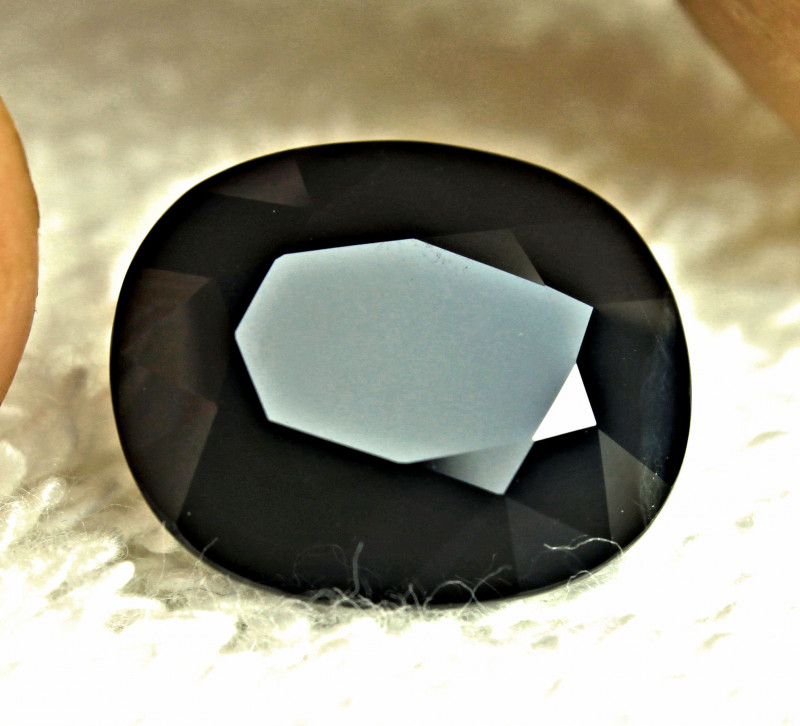
Black sapphire is a less sought-out, opaque type colored by iron and lots of titanium. It may actually be very dark blue, green, purple, or gray. Most jewelers consider black sapphires low-quality unless they’re black star sapphires.
Uniquely, black star sapphires get their “star” from hematite and ilmenite inclusions. Occasionally, these star sapphires are 12-rayed with white and gold rays.
Among sapphires, black ones are the only strongly magnetic type.
Brown Sapphire
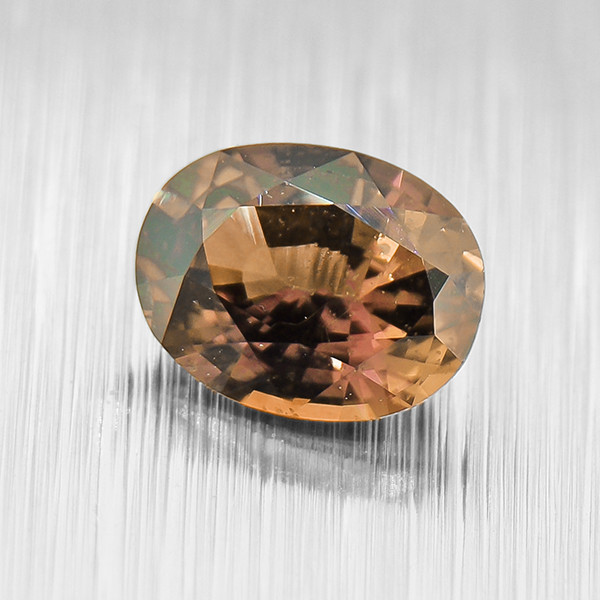
Brown sapphires only started becoming popular recently with the rise of chocolate diamonds. Gem-quality brown sapphires are somewhat rare. Their color comes from iron and sometimes titanium.
Deep, rich specimens are often labeled “chocolate sapphires.” Another trade name is “cognac,” for reddish-brown or reddish-orange sapphires. Other potential undertones are yellow, pink, and black.
Next, we’ll go over some rare, exciting sapphire varieties.
Sapphire Varieties
Besides being classified by single colors, certain sapphires are known for other traits, be it color combinations, notable sources, or optical effects.
Padparadscha Sapphires
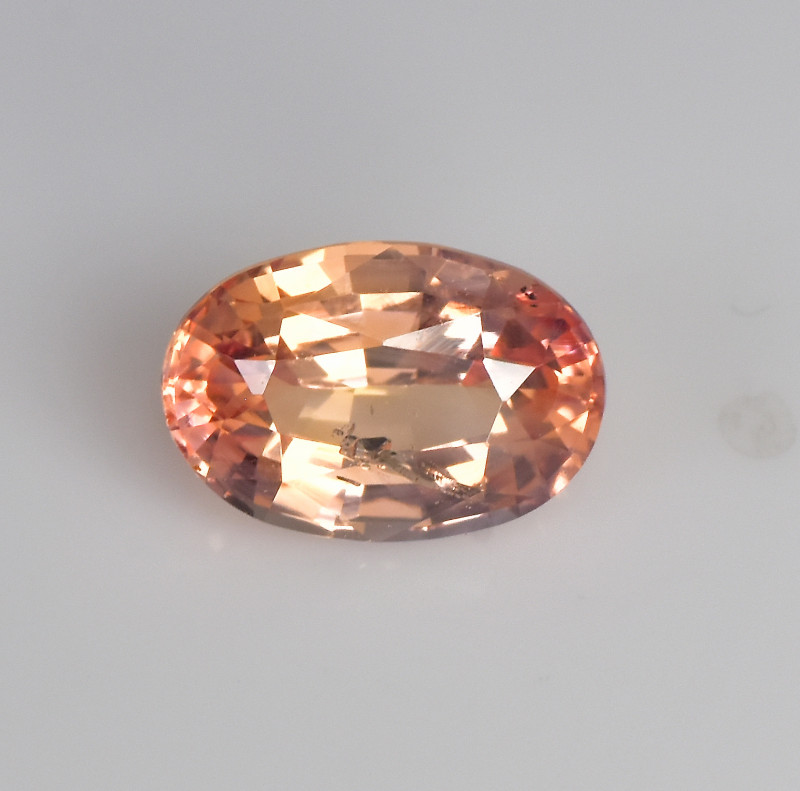
Padparadscha sapphires are among the rarest, most valuable sapphires. They’re traditionally from Sri Lanka, named from the Sanskrit term for “lotus blossom.”
Exact color requirements are debated, but it’s definitely a combination of pink and orange, sometimes described as “sunset,” “apricot,” or “peach.”
Peacock or Mermaid Sapphires
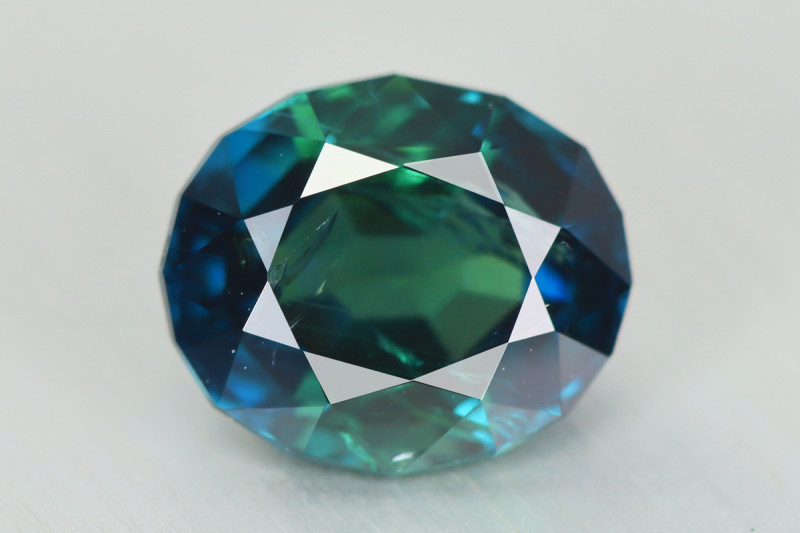
Teal sapphires have dominant blue and green hues, sometimes with yellow undertones. These have seen recent spikes in popularity.
The blue-green ratio can vary. If it’s a 50-50 mixture, you get a “peacock” or “mermaid” sapphire that can resemble Paraiba tourmaline. Most come from Montana, USA.
Bi-Colored or Parti-Colored Sapphires
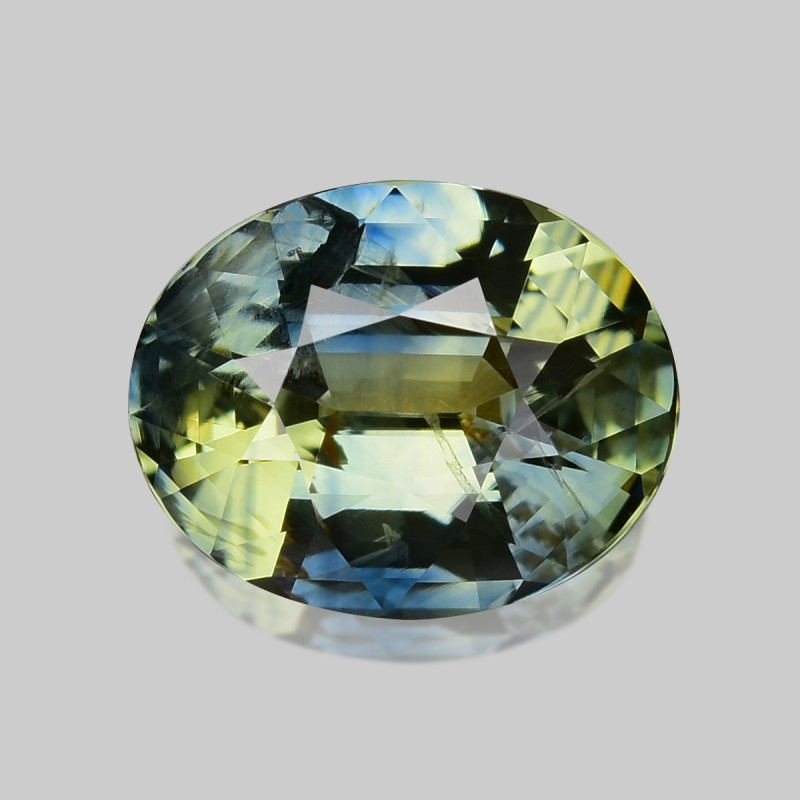
Rather than blending two colors, some sapphires show two distinct colors at once due to color-zoning. These are called bi-colored, bi-color, parti-colored, or polychrome sapphires.
Bi-colored sapphires are quite rare. The majority are green and yellow, while the rarest (and most valuable) are blue and purple or tri-colored. A distinct color separation in the center of the stone yields greater value.
Color-Changing Sapphires
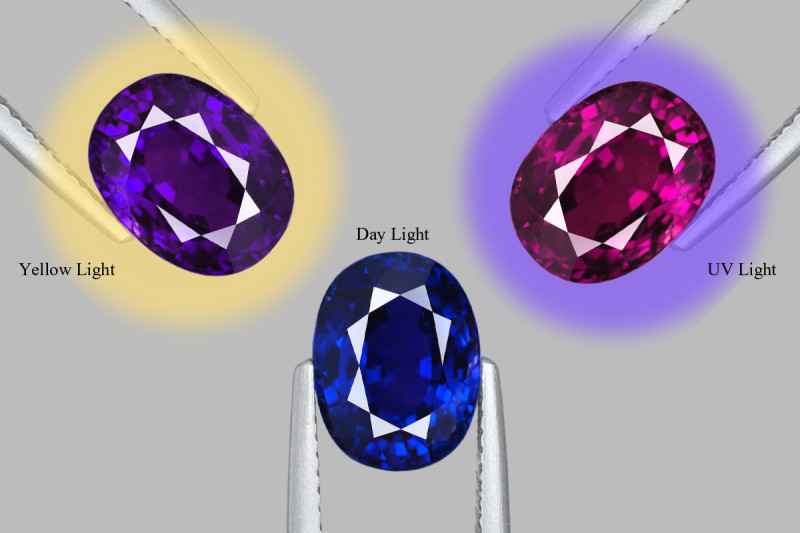
A rare, sought-after variety is color-changing sapphires that shift in color under different lighting (typically daylight and incandescent lighting).
Most are blue or purple in daylight and violet or reddish-purple under incandescence. Rarer types shift:
Green to red or reddish-brown
Red to brown
Green to yellow-green
The top value factor here is the strength of the color-change (i.e. weak, moderate, or strong).
Star Sapphires

Certain inclusions (usually parallel bundles of diaspore or rutile) can create a star-like light reflection, an optical phenomenon called asterism. The result is an asteriated “star sapphire.”
Star sapphires come in most colors, though orange, green, and yellow ones are quite rare. Most have a six-rayed star, but some very rare dark blue or black star sapphires can have a 12-rayed star.
The most desirable star sapphires are transparent and deep blue with a bright, distinct, more uniform star.
Trapiche Sapphires

A similar-looking variety to star sapphires is trapiche sapphires. These also have a 6-rayed star-like pattern due to inclusions, but the “star” doesn’t reflect light. It more closely resembles wheel spokes.
This effect happens when carbonaceous inclusions settle between growth zones during uncommon formation conditions. A famous example is Brazilian trapiche emeralds.
Stepping into the stone’s spiritual side, what do sapphires symbolize?

Sapphire Meaning & History
Overall, sapphires generally symbolize wisdom, heaven, and loyalty, but each color carries specific symbolism.
The sapphire colors and meanings are:
Blue: Honesty & commitment
Pink: Love & forgiveness
Purple: Spiritual wisdom & reliability
Yellow: Success & knowledge
Orange: Creativity & joy
Green: Serenity & balance
White: Intuition & freedom
Black: Strength & power
Brown: Protection & resilience
What about sapphire’s cultural meanings?
Sapphire Folklore & Myths
Being around for thousands of years, sapphires have gained plenty of legends.
In Islam, the seventh heaven is described as containing sapphires. Jewish scripture lists sapphire among the twelve stones of the High Priest’s Breastplate and describes God’s throne in heaven as being made of sapphires.
The Christian New Testament includes sapphire as one of the twelve foundation stones of New Jerusalem. Christians believed sapphires represented purity, godliness, and heavenly blessings. One legend states that the Ten Commandments were engraved on sapphire.
Additionally, some Christians call star sapphires “Stones of Destiny,” believing the three crossbars of their six-rayed star represent the virtues of faith, hope, and destiny.
Ancient Greeks honored Apollo, god of the sun, with sapphire. They also believed the stone reached the spirit realm, so many wore it when consulting with the Oracle of Delphi. One 12th-century Greek legend states that Helen of Troy was so desirable because she possessed a large star sapphire.
Regarding sapphire’s origins, an ancient Persian legend asserted that Earth sat on a huge sapphire, its reflection making the sky blue.
Royals in ancient times believed wearing sapphires protected them from jealousy and poison. In fact, sapphire’s use as a protective talisman was widespread.
 Pictured above: Signet stone of King Alarich II (484-587). This signet is counted among the oldest Germanic royal signets. The mirror-image circumscription reads: ALARICVS REX GOTHORVM = Alarich, king of the Goths. | Image credit: James Steakley, Creative Commons Attribution-Share Alike 3.0 Unported license
Pictured above: Signet stone of King Alarich II (484-587). This signet is counted among the oldest Germanic royal signets. The mirror-image circumscription reads: ALARICVS REX GOTHORVM = Alarich, king of the Goths. | Image credit: James Steakley, Creative Commons Attribution-Share Alike 3.0 Unported license
Ancient & Medieval History
The oldest record of sapphires is jewelry from 600-275 BC worn by ancient Italians called Etruscans. The sapphires came from Sri Lanka, the oldest and most significant source of sapphires.
Wider awareness came around 1200 AD after Marco Polo wrote about Sri Lankan sapphires in his work, Book of the Marvels of the World. Medieval kings wore sapphires for protection, a consistent historical trend among nobles.
Circa 1100 AD, Pope Innocent III established that bishops wear unengraved sapphire rings. Clergymen also wore blue sapphires to symbolize heaven.
Around the same time, Muslim scientist Al-Biruni discovered sapphires and rubies were the same mineral long before modern mineralogists.

Modern History
One thread from ancient to modern times is sapphire engagement rings. The modern type of engagement ring practice started in the 1400s to 1500s when the wealthy and royal popularized it.
Sapphire was a popular stone of choice, as non-diamond precious gems were considered more valuable. In fact, blue sapphire engagement rings were the most common center stone of choice in the US before diamonds became the standard in the early 1900s.
While sapphire jewelry today extends beyond wealthy elites, royals have kept the popularity going. One famous example is the Marguerite ring, Princess Diana’s engagement ring sporting a 12-carat Ceylon sapphire.
Besides adorning royals and common folk alike, what is sapphire good for today?

Sapphire Healing Properties
Sapphire has remained a treasured healing stone into modern times.
Some nicknames for sapphire as a healing crystal include:
Stone of Mental Focus & Order
Stone of Destiny
Stone of New Love
Stone of Prosperity
Stone of Commitment
Continuing past traditions, sapphires are still popular third eye chakra stones, opening this energy center to improve your intuition and spiritual awareness.
Physical Healing
Purported physical sapphire stone benefits include treating or helping problems with:
Vision
Migraines
Insomnia
Fevers
Immune system function
Sapphires are also believed to improve your senses.
Emotional Healing
Emotionally, sapphires are said to:
Provide relaxation
Dispel anxious thoughts
Increase concentration
Promote self-discipline
Boost creativity
Encourage bravery
Next, we’ll move on to how experts determine sapphire value via grading.
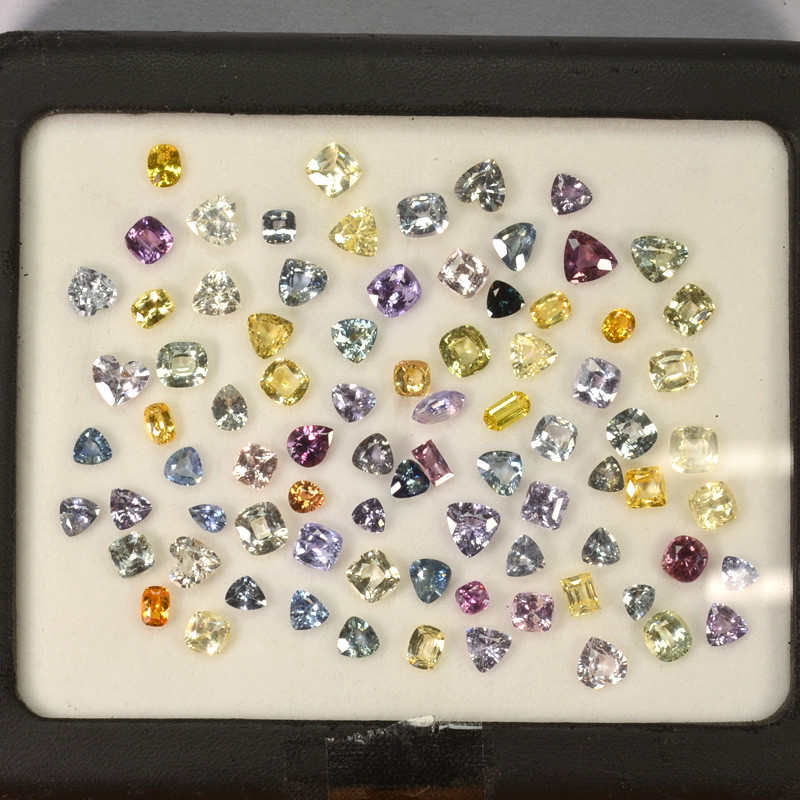
Sapphire Gemstone Properties
Sapphire value depends on the stone’s color, cut, clarity, carat weight, treatments, and origin (natural vs. synthetic).
Color
Color is the number-one sapphire value factor. Strong to vivid saturation and medium to deep tone is best. Too-light, too-dark, or grayish colors are less valuable.
Hue-wise, the most valuable colors are Kashmir blue, Padparadscha, and bright pinks. Next are teal, then purple/violet, followed by green, yellow, and brown. Black (non-star) sapphires are the least valuable.
Rare color-changing and bi- or tri-colored sapphires are also valuable.
Cut
Lapidarists (gem cutters) must consider color zoning, pleochroism, sparkle, and optical effects when cutting sapphires. The best cuts display the sapphire’s inherent traits well with proper symmetry and no dark zones.
Standard round, cushion, and oval faceted cuts are the most popular. More valuable shapes, in descending order, are emerald, marquise, and pear.
Star sapphires must be cut as cabochons. Lower-quality sapphires may also become cabochons. Other sapphire cuts include carvings and beads.
Clarity
Sapphires are Type II colored gems, meaning minor visible inclusions are expected. Generally, sapphires have better clarity than rubies. Some jewelers grade sapphire clarity in diamond clarity terms — IF, VVS, etc.
The most valuable have VVS clarity — no visible inclusions under 10x magnification — but these are incredibly rare. The lowest-value clarity is SI to I (slightly included to included). Most sapphires fall in the middle, from VS to SI (very slightly to slightly included).
Common sapphire inclusions include:
Silk (long, fine, and thin threads, often of rutile)
Hexagonal color banding or growth lines
Fingerprints (hollow, web-like, cloudy areas filled with gas or fluid, creating fingerprint-like patterns around other included crystals)
Zircon crystals, often with dark “halo” fractures
Overall, more visible inclusions lead to lower values. Inclusions that cause asterism or the velvety look of Kashmir sapphires are exceptions, though.
 Pictured above: Logan Sapphire | Image credit: Chip Clark, Smithsonian staff; Public Domain
Pictured above: Logan Sapphire | Image credit: Chip Clark, Smithsonian staff; Public Domain
Carat Weight & Size
Sapphire carat weight depends on the color and source. Blue sapphires come in many sizes, but their quality tends to decrease with larger sizes. Large, high-quality stones are the most valuable.
The price-per-carat of most sapphires will increase with larger sizes, usually at 2, 3, and 4 carats. Options over 5 carats have significantly higher price-per-carat rates.
Some record-setting large sapphires include:
Blue Giant of the Orient: 486.52 carats, cornflower blue; World’s largest faceted blue sapphire; Discovered in Sri Lanka, 1907
Lone Star: 9,719.5 carats, deep blue; World’s largest star sapphire; Discovered in North Carolina, USA, 1989
Star of Adam: 1,404.49 carats, light blue; Second largest star sapphire; Discovered in Sri lanka, 2016
Black Star of Queensland: 733 carats, black; Third largest star sapphire; Discovered in Australia, 1938
Blue Belle of Asia: 392.52 carats, cornflower blue; World’s most expensive blue sapphire (sold for $17,305,996 in 2014); Discovered in Sri Lanka, 1926
Logan Sapphire: 422.98 carats, violet-blue; Discovered in Sri Lanka
Queen Marie of Romania Sapphire: 478.68 carats, cornflower blue; Formerly largest sapphire ever sold in 2003
Star of India: 563.35 carats, gray-blue; Fourth largest star sapphire; 6-rayed stars on top and bottom; Discovered in Sri Lanka, early 1700s
Stuart Sapphire: 104 carats, blue; Part of British Crown Jewels; Likely from Asia
The Priceless Sapphire: 451,500 carats, white and blue; World’s largest carved sapphire
Treatments
Roughly 95 percent of sapphires are heated to improve color and clarity, a practice dating back millennia.
Though high-quality untreated sapphires can be over 50 percent more expensive than treated ones of similar quality, heat treatments don’t significantly affect value often.
Diffusion treatments happen occasionally to enhance the “star” in star sapphires or change a sapphire’s color. Rarer are irradiation treatments, which can make colorless sapphires light blue, orange, or yellow. Flux fracture-healing may be done to improve clarity.
We recommend avoiding sapphires treated with thin film coatings, oil treatments, or fillings.
Synthetics
Corundum was the first synthetic (lab-grown) gemstone created for commercial use, starting with Marc A. Gaudin’s first synthetic rubies in 1834.
The first synthetic sapphires came in 1873, created via the flux method, followed by the development of the flame fusion method in 1902.
Sapphires can be synthesized through solution processes (growing from a seed crystal) or melt processes like the Czochralski process or Verneuil flame fusion method.
Besides appearing more flawless than natural material, synthetic sapphires will also often contain curved striae or air bubbles inside.
Synthesizing star sapphires started in the late 1940s with Union Carbide’s “Linde Stars.” These were created by heating synthetic sapphires with titanium to create artificial rutile inclusions. Most Linde star sapphires had an “L” on the bottom (though not all), making them easy to identify. However, their production stopped in the 1970s.
Luckily, there are still indicators for identifying other synthetic star sapphires. The first indicator is color, which is often more vivid and evenly distributed than it is in natural star sapphires. Many synthetic star sapphires will also have a more flawless and uniform star than those that form naturally.
Value-wise, lab-grown sapphires are significantly less expensive than their natural counterparts, up to $10,000 less per carat.
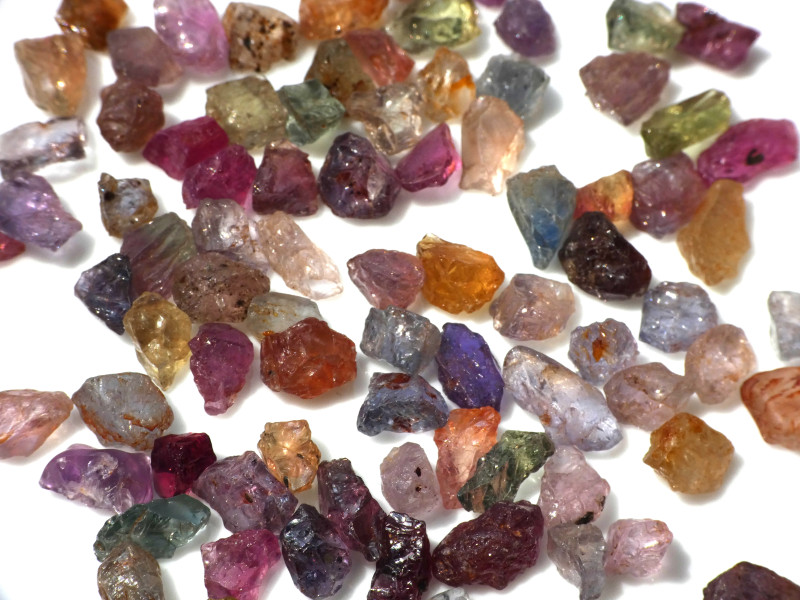
Sapphire Formation & Sources
Corundum stones form inside metamorphic or igneous rocks.
In igneous rocks, the stone crystallizes as the rock cools from magma. The igneous rock must be aluminum-rich and silica-free.
In metamorphic rocks, the crystals often form when ancient sea beds undergo metamorphism from hot, aluminum-rich waters.
Often, outside forces like weathering break down the rock surrounding the sapphire. The stone is then carried by water to alluvial deposits like riverbeds.
Mining Locations
The best sapphire source can depend on what color you’re looking for, even which specific shade of blue. The most significant source historically and into present-day is Sri Lanka.
Besides Sri Lanka, the top sources for sapphire gems are:
Australia
Kashmir, India
Kenya
Laos
Madagascar
Montana, USA
Myanmar (Burma)
Tanzania
Thailand
Vietnam
You’ll often see a sapphire’s original source as a trade-name descriptor, such as “Burmese,” “Kashmir,” or “African.” High-quality sapphires from certain regions can have common characteristics, but this doesn’t represent all sapphires from that source. Plus, locale-based trade names aren't always accurate. A reputable gemstone certification is better for ensuring authenticity.
Sources aside, is sapphire expensive? Sometimes, but prices range.

Sapphire Gemstone Price & Value
Sapphire gemstones start at $5 per carat and reach over $40,000 per carat. Below, we’ve outlined different sapphire price-per-carat ranges in descending value. These prices encompass all carat-weight ranges.
Blue Sapphire Prices
Faceted Kashmir sapphire prices listed by quality:
Top: $9,000-$50,000 per carat
Very Good: $7,000-$42,000 per carat
Good: $2,400-$22,500 per carat
Non-Kashmir faceted blue sapphire prices:
Top: $1,400-$10,500 per carat
Very Good: $480-$8,100 per carat
Good: $250-$6,300 per carat
Fair: $210-$4,800 per carat
Blue sapphire cabochons fetch $20-$300 per carat.
Pink & Padparadscha Sapphire Prices
Next in value are faceted Padparadscha sapphires:
Top: $1,000-$25,000 per carat
Very Good: $950-$22,000 per carat
Good: $900-$20,000 per carat
Onto faceted pink sapphires prices:
Very Good: $160-$8,400 per carat
Good: $140-$7,800 per carat
Fair: $50-$1,050 per carat
Other Fancy Color Sapphire Prices
Prices for other faceted, fancy color sapphires:
Purple Sapphires: $280-$1,840 per carat
Yellow Sapphires: $50-$1,625 per carat
White Sapphires: $50-$800 per carat
Green Sapphires: $20-$240 per carat
Black Sapphires: $4-$290 per carat
Phenomenal Sapphire Variety Prices
Faceted color-changing sapphires range from $120 to $5,000 per carat.
Star sapphire prices:
Fancy Color: $100 to $500 per carat
Blue: $20 to $1,200 per carat
Black: $13 to $30 per carat
Before we wrap up, we’ll teach you how to care for your sapphires.
Sapphire Care and Maintenance
Given their durability, most sapphires are suitable for daily wear and require minimal gemstone care.
In terms of color-fading, almost every sapphire will fade somewhat with prolonged sun exposure. Yellow and sometimes Padparadscha sapphires are more susceptible to sun-exposure fading. Interestingly, many jewelers leave yellow sapphires to richen their color, which does work. Yellow sapphire’s color stability depends on the coloring agent.
Fractures, abundant inclusions, fracture-filling, and oil treatments make sapphires weaker. Keep these types away from harsh chemicals or mechanical cleaning systems.
You can clean most other sapphires with mechanical systems like ultrasonic or steam cleaners. However, the safest cleaning method is with a soft toothbrush, warm water, and mild soap.
Sapphires are hard, so they can scratch most gems. It’s best to store them separately from other gems.

Which Sapphire Captivates You?
By now, you can see why sapphires have maintained their esteemed status for centuries. With legends, benefits, and colors galore, what’s not to love?
Ready to find your favorite? Shop sapphire gemstones today!
Was this article helpful?
6 people found this article helpfulRoss Sedawie
- Written - 24th Apr 2012
- Edited - 31st Aug 2023




















